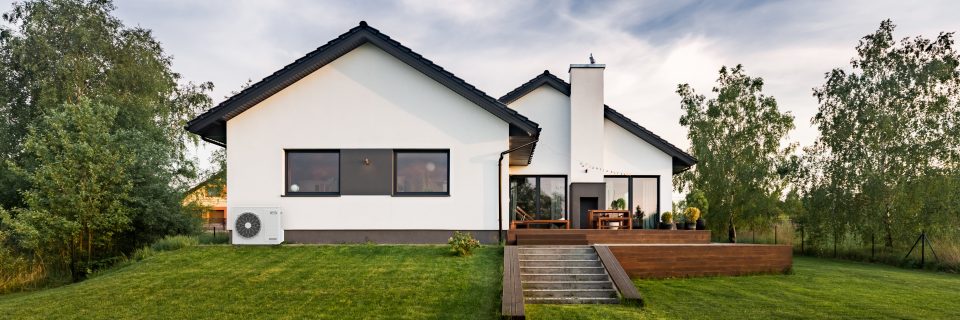Most homes in the UK have a single-phase electricity supply, which is sufficient for the majority of household appliances. With the growing popularity and uptake of renewable energy solutions like air source heat pumps and electric vehicles, homeowners may wonder whether they need a three-phase electricity supply. We explain the differences between single-phase and three-phase electricity supply and whether you need a three-phase supply for an air source heat pump and an electric vehicle.
Single-Phase Electricity Supply
Single-phase electricity supply is the most common type of electricity supply for homes in the UK. It consists of a single alternating current (AC) waveform that alternates between a positive and negative voltage. Single-phase electricity supply is typically used for powering household appliances like lighting, small kitchen appliances, televisions and computers. Single-phase electricity is supplied at 230 volts (V) in the UK and is rated at a maximum capacity of 100 amps.
Three-Phase Electricity Supply
Three-phase electricity supply is less common in residential properties in the UK but is widely used in commercial and industrial settings. It consists of three alternating current waveforms that are 120 degrees out of phase with each other. Three-phase electricity supply is typically used for powering larger electrical equipment like motors, pumps and industrial machinery. Three-phase electricity is supplied at 400 volts (V) in the UK and is rated at a maximum capacity of 200 amps.
Differences Between Single-Phase and Three-Phase Electricity Supply
The main difference between single-phase and three-phase electricity supply is the number of alternating current waveforms. Single-phase electricity supply has one waveform, while three-phase electricity supply has three waveforms. This means that three-phase electricity can carry more power than single-phase electricity. Another difference is the voltage level; single-phase electricity is supplied at 230V, while three-phase electricity is supplied at 400V.
Do You Need Three-Phase Supply for an Air Source Heat Pump and an Electric Vehicle?
Air source heat pumps and electric vehicles are becoming more popular in the UK, and they require a significant amount of electricity to operate. Whether you need a three-phase electricity supply depends on the size of your home, the size of the heat pump and the electric vehicle’s charging requirements.
In most cases, a single-phase electricity supply is sufficient for powering an air source heat pump and an electric vehicle. However, if you have a larger home or a larger heat pump, you may need a three-phase electricity supply to meet the energy demands of your home.
If you are planning to install an electric vehicle charging point at your home, you should check the charging requirements of your electric vehicle. Some electric vehicles can be charged on a single-phase electricity supply, while others require a three-phase electricity supply to charge at full speed. If your electric vehicle requires a three-phase electricity supply, you will need to have it installed at your home.
Distribution network operators (DNOs)
If you need assistance with your energy supply and want to investigate whether you need three-phase electricity supply, speak to the DNO that covers your area or region.
- Scottish and Southern Electricity Networks – South of England, North of Scotland
- Scottish Power Energy Networks – Central and Southern Scotland, Merseyside, Cheshire, North Wales, Shropshire
- Northern Powergrid – North East England, Yorkshire
- Electricity North West – North West England
- National Grid (formerly known as Western Power Distribution) – South West England, South Wales, West Midlands, East Midlands
- UK Power Networks – South East England, East of England, London
- Northern Ireland Electricity Networks – Northern Ireland
- Scottish and Southern Electricity Networks – Central Southern England
- Electricity North West – Cumbria, Lancashire, Greater Manchester, Merseyside
- Northern Powergrid – North Yorkshire, North Lincolnshire
- Scottish and Southern Electricity Networks – North of Central Scotland
Please note that the regions covered by each DNO may be subject to change, so it is always best to check with the relevant DNO or Ofgem for the most up-to-date information.


This tells me nothing of substance. I may or may have a need for it.